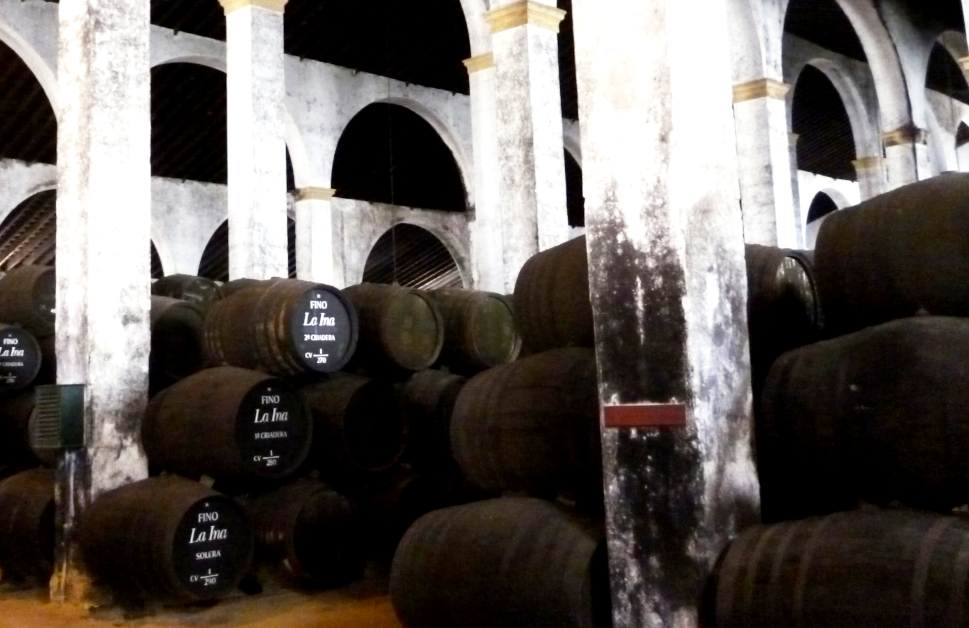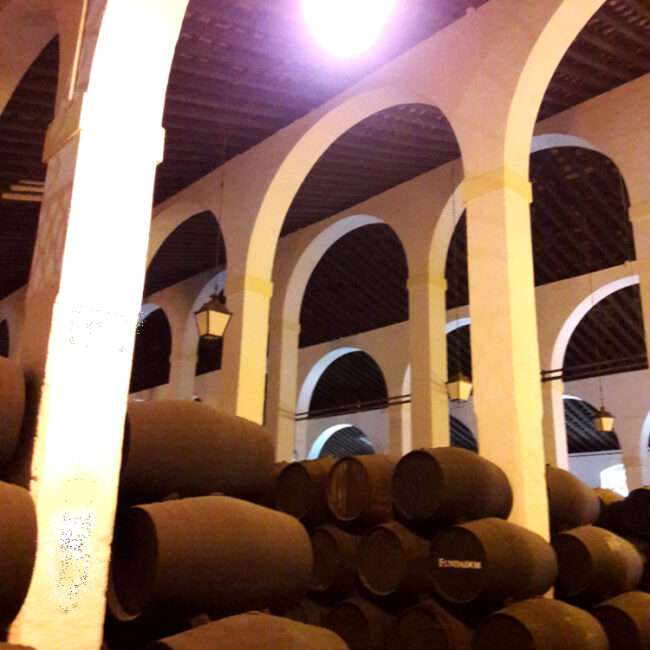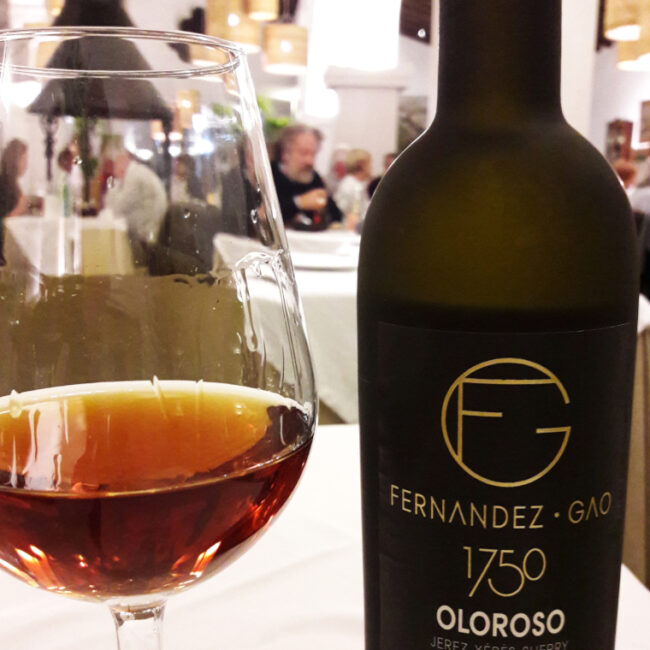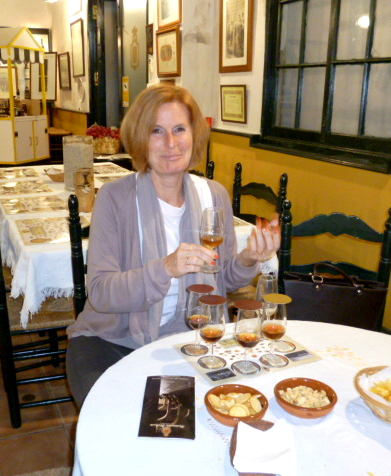
About Sherry Part III
isiting a Sherry bodega will blow your mind. „Cathedrals of Wine“ they are often called and they pretty much go against everything you know about wine cellars.

Firstly they are situated over ground on an north-east – south-west axis allowing for better air circulation.
Their tall walls often discoloured by decades of mould. The grey and black a stark contrast to the high white arches that support the roof structure. The huge, mostly kept open, windows are covered by massive blinds fashioned in the traditional way from esparto grass.
The floor will be a clayey sand of ochre colour. The myriad of barrels or butts are black and stacked up to a dozen high in long rows, white writing on them indicating their contents.
Criadera & Solera
To make sense of what you see: the hight of the room ensures that in summer the hot air will rise high above the barrels acting as insultion. The thick walls keep heat out and humidity in resulting in mould that contributes to and maintains the yeast population. The permeable esparto blinds allow the cooling, salty breezes from the Atlantic to enter while keeping out the heat. The earthen floor provides natural humidity and when watered in summer, helps to maintain even temperatures. The towering arches, while keeping up the roof also section the large room, providing order. Lastly the highly stacked barrels, the so-called solera, is the most intriguing tool of all.
The word solera stems from the Spanish word suelo – floor. After all, it is the bottom layer of barrels that provide the wines for bottling. The term also applies to a certain number of barrels stacked up in the bodega.
The barrels used for Sherry today have a capacity of 600 liters and are called Bodega butt, a name derived from the Spanish term bote de bodega.
Only a certain percentage of wine can be drawn from the solera per year, and is most carefully replenished by the same amount of wine from the above criadera (row of butts), which is then replenished by the next layer up and so forth.
It does sounds complicated, but this is the only way to keep the flor alive for up to eight years. Remember, it is the added young wine that introduces necessary nutrients for the flor yeasts into the system.
Crianza Oxidativa
On the other hand the solera system also permits a very homogeneous ageing of the wines created in the crianza oxidativa, the upbringing with oxygen so to speak.
For this the based wines are fortified to 17 VOL % of alcohol, thus impeding the development of flor. This way they age in greater contact with air.
Over the years their colour will transform from pale yellow via amber to a rich dark brown. Eventually evaporation is concentrating the wines resulting in even richer, more complex aromas and flavours as well as a higher alcohol content.

The dry Sherry which is created with the crianza oxidativa is the fantastic Oloroso. Deep amber in colour and true complexity are its characterisitics. One of the few wines that will go excellently with the difficult to pair artichoke.
ow, just tink about it. Some of the Soleras have been in the cellars for many decades, if not centuries. In one of the oldest bodegas, Fundador, there is a special section of barrels signed by famous people, royalty even. One of oldest barrels is signed by King Alfonso III in the year 1874. It no longer contains wine but other barrels signed by stars from the 1960ies are still in use. Now let your mind wander a little further, this means that some of the wines in the bottom row might truly be ancient, carrying through flavours of a world that no longer exists.
Diese Seite verwendet Akismet, um Spam zu reduzieren. Erfahre, wie deine Kommentardaten verarbeitet werden..



Schreibe einen Kommentar